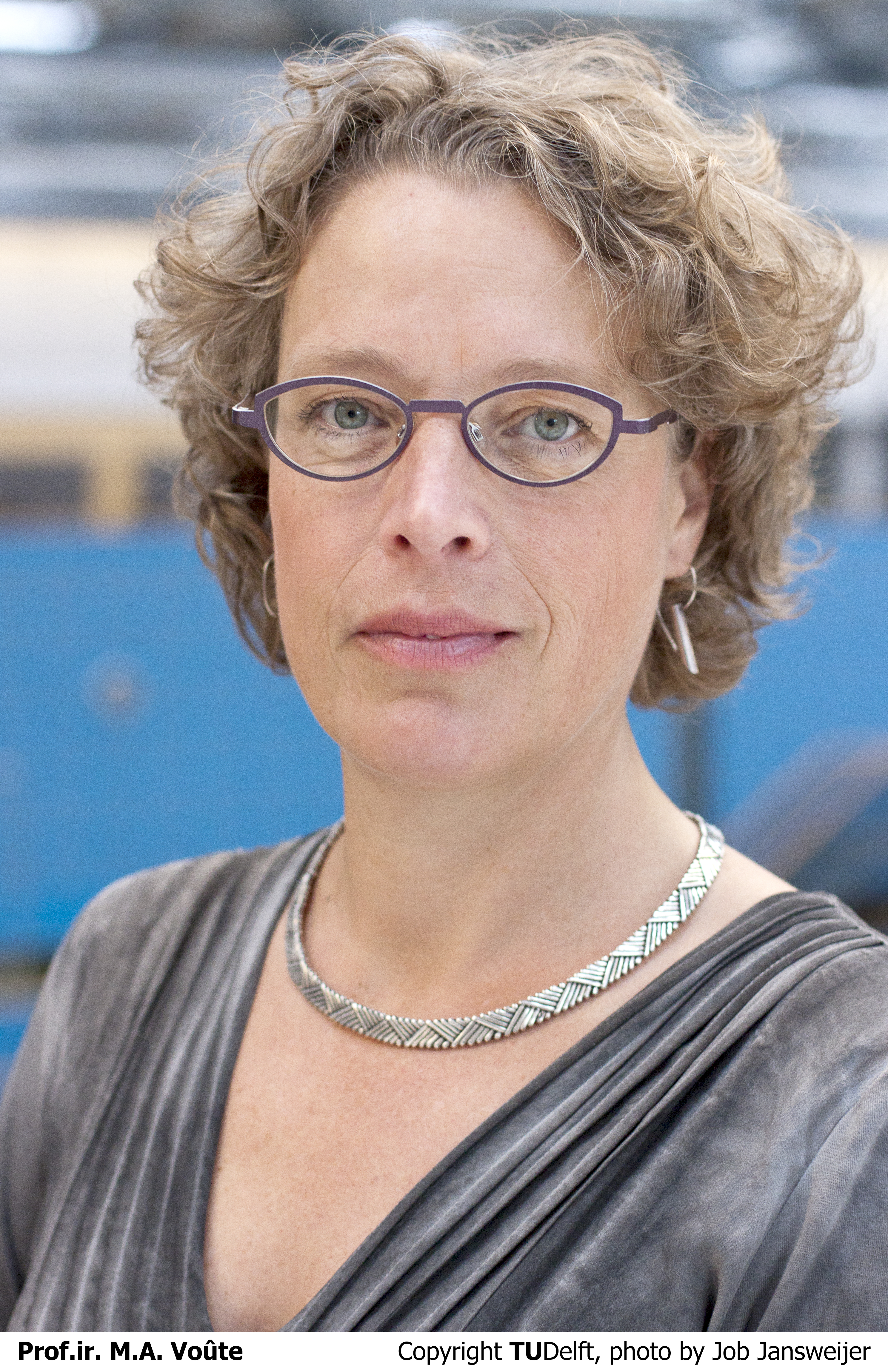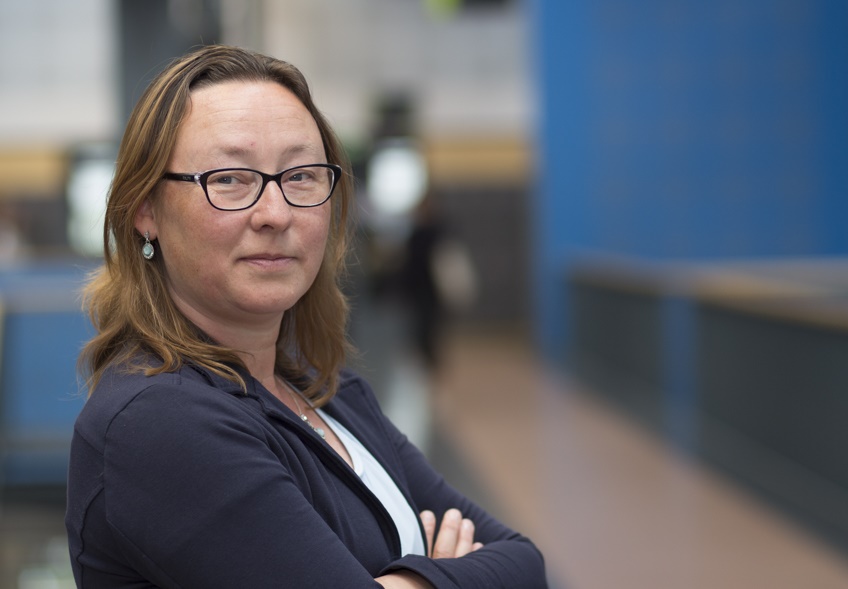An interview with Ena Voûte, Dean of IDE and Bianca van Someren-Rijneveld, HR Advisor at IDE
What can we learn from our colleagues regarding the role of women in science? In a series of interviews with Deans, Department Heads and HR advisors, we share their views on gender diversity, equality and inclusion. What are their thoughts, ideas and actions on creating diverse and inclusive working environments?
Today we talk with Ena Voûte, Dean of the faculty IDE and Bianca van Someren-Rijneveld, HR advisor at the faculty of IDE.
Many small steps in the right direction bring about change. You can’t change course and create a new culture all at once, but if you build it step by step and stick with it, you’ll succeed.
Ena
Is there a leak in the pipeline?
We looked at gender diversity figures for the faculty of IDE and found that the percentage of female professors is lower than the percentage of female students. The percentages of female full professors, associate professors and assistant professors are 31%, 40% and 54%, respectively. The percentage of female students is slightly higher than 50%. Is there a leak in the pipeline?
Ena: “I thought you were going to say that we’re setting a good example as a faculty. We are moving towards a balanced pipeline. You can see that there is now a good balance between men and women at the bottom of the pipeline. We’re doing our utmost to balance the pipeline at all levels, but this takes time.”
Bianca: “We are taking action on several fronts. There are now always women on the selection committees, which wasn’t always the case in the past. During recruitment and selection, it helps to consider your candidates more broadly and from different perspectives. The Selection Committee should reflect what we want for the faculty, so we also look at cultural diversity and diversity in specialisations. The same applies to other bodies, such as the Career Development Committee.”
“We now also have a working group, started on 22 March, to deal with diversity and inclusion in the faculty in the broadest sense. They will identify where the bottlenecks and opportunities for improvement are. This includes accessibility for people with disabilities and gender-neutral signs in the building.”
Why is gender equality so important?
Ena: “Diversity ensures that you hear multiple perspectives; it prevents you from not seeing your blind spots. A diverse team can be more difficult to manage, because you might have to focus on fifteen aspects instead of five. But in the end, the result is better. In our faculty, many people like to look at things from different perspectives. That is the essence of design. We try to find a balance between the revolution of technology and the evolution of mankind. Diversity is also a lot of fun. Your view of the world becomes richer and you gain more appreciation for others and their backgrounds. We can achieve more together.”
How do you ensure more gender diversity?
Ena: It’s important to make the most of all the opportunities you see to improve diversity. By taking small steps over the years, the composition of your workforce changes and diversity (gender and otherwise) improves at all levels. This conversation about diversity and creating opportunities for talent has been emphasised in recent years.”
Bianca: “We deliberately pay attention to talent in our R&D Cycle. Employees, both male and female, who show talent and interest are given the opportunity to thrive. We regularly discuss the succession policy in the faculty and departmental management teams. We match the roles in the organisation and the development of a field with the talents and interests of staff. We very consciously look for diverse talent. Good science and good operational management both require diversity.”
Ena: “We discuss the path to professorship with those who aspire to it. This includes things that have nothing to do with academic expertise, such as organisational tasks. These tasks are educational and also fun to do. It starts with making people aware that these opportunities exist and that it makes sense to take an active role in them.
TU Delft has set a target of 25% female professors by 2025. What is the ambition for your faculty?
Bianca: “Targets are nice, but they are not a goal in themselves. The conversation should be about what’s best for the faculty. What does the faculty need, today and in the future, in order to perform at its best and deliver the best output? Ultimately, that’s what it’s all about.”
Ena: “There is a minimum. Having only one woman in a team of men is not desirable. To make everyone feel at ease and avoid an ‘us and them’ mentality, women should make up at least 30% of a team. In addition, people need to be able to do what they’re good at and what they enjoy. A target is useful to check whether we’re on the right track. You can strive for the most complete organisation possible, and targets are part of that. There is still a lot of work to be done at TU Delft. For example, our university has only four female departmental directors. And our faculty currently has one.”
How would you describe the culture in the faculty?
Bianca: “The culture has changed in recent years. For example, we now openly talk about the pressure of work and mental well-being. We ask our staff if they still feel happy and comfortable in their jobs. ‘Undesirable behaviour’ is a recurring topic of discussion in the faculty management team.”
Ena: “There are many people from the LGBT community working in our faculty. It is important to me that these people feel at home. I truly believe that we have a community in which a lot is possible and a culture in which a lot can be discussed.”
Bianca: “The downside is that we sometimes have to have unpleasant conversations. We call this a culture of accountability, and it is developing. It’s never nice to confront people about ineffective behaviour.”
Ena: “Good leadership is crucial. Observing ineffective or undesirable behaviour and making it discussable is important. The fact that we are constantly in competition with each other in science is a flaw in the system. It makes you egocentric. We need to see if this can be done differently. Behavioural change takes time, but we are seeing changes taking place.”
Bianca: “For example, you notice that it is becoming more and more common to read each other’s project proposals or to ask colleagues for input for a tenure track or personal development plan. This helps create an open culture, so that we can discuss anything with each other, even when things aren’t going so well.
Ena: “Many small steps in the right direction bring about change. You can’t change course and create a new culture all at once, but if you build it step by step and stick with it, you’ll succeed.”

